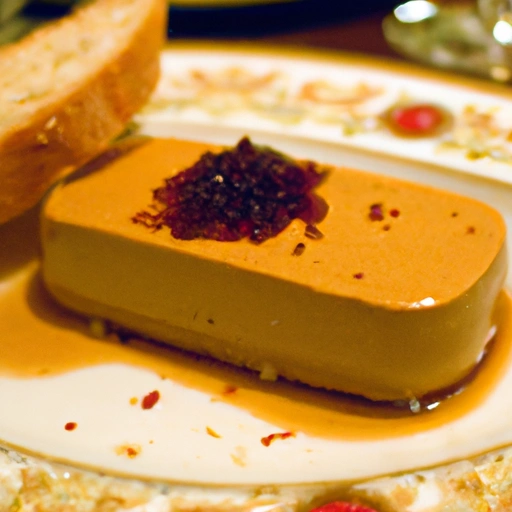Foie Gras
Description

Foie gras is a luxury food product made from the liver of a duck or goose that has been specially fattened. It's a rich, buttery, and delicate delicacy that is often served as a pâté, mousse, or parfait. This gourmet item is enjoyed for its unique flavor and texture, which have made it a famous feature in French cuisine, although it has sparked controversy due to animal welfare concerns.
Common uses
Foie gras is commonly used as a spread on toast or as a garnish for steaks and other dishes. It is also a popular feature in holiday feasts and special occasions, signifying opulence and celebration.
Nutritional value
Calories
Foie gras contains approximately 462 calories per 100 grams (3.5 oz).
Protein
It offers about 11 grams of protein per 100 grams (3.5 oz).
Fat
Foie gras is high in fat, containing roughly 43 grams of fat per 100 grams (3.5 oz), with a significant amount of saturated fat.
Carbohydrates
This ingredient has a negligible amount of carbohydrates, typically less than 1 gram per 100 grams (3.5 oz).
Vitamins
Foie gras is a source of fat-soluble vitamins such as vitamin A and vitamin E.
Minerals
It also contains minerals like iron and copper, which are essential for health.
Health benefits
While foie gras is rich in certain vitamins and minerals, it is predominantly consumed for its taste rather than health benefits. It can be part of a balanced diet if eaten in moderation.
Potential risks
The high fat and cholesterol content of foie gras can pose health risks if consumed in large quantities. Additionally, there are ethical concerns regarding the force-feeding of ducks and geese to produce foie gras, leading some regions to ban its production.
Common recipes
Foie gras can be found in recipes such as foie gras terrine, seared foie gras with fruit reductions, and foie gras au torchon. It is often served with sweet and tart accompaniments to balance its richness.
Cooking methods
Foie gras can be pan-seared, made into a pâté or mousse, or served raw as part of a charcuterie board. The delicate nature of foie gras means it should be cooked over low to medium heat to prevent burning.
Pairing with other ingredients
This ingredient pairs well with sweet elements like fruit preserves, brioche, and dessert wines such as Sauternes. It also complements savory dishes like steak and roasted vegetables.
Summary
Foie gras is a gourmet food item with a rich history and a distinctive place in French cuisine. Its creamy texture and complex flavor profile make it a beloved, albeit controversial, ingredient. While enjoyed by many for its taste, the health implications and ethical considerations should be kept in mind. In culinary applications, foie gras brings a touch of luxury to dishes and is celebrated for its versatility in both sweet and savory recipes.